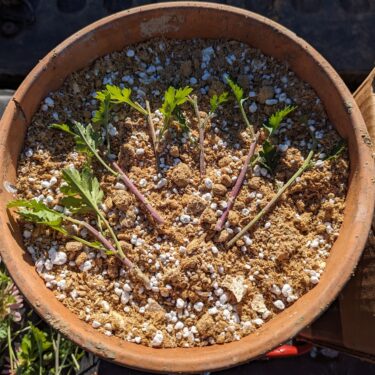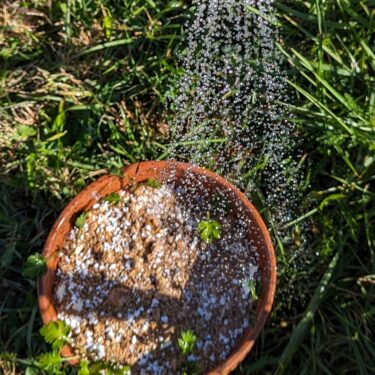This blog discusses planting perennials in the garden. Perennial plants include bulbs and plants. Fall is an excellent time to divide your plants, start cuttings and to transplant perennials as well.
Bed preparation for your perennials
Bed prep can range from infilling into an existing bed, expanding an established bed, renovating an existing planting, or starting an entirely new bed. Start with a simple soil test. Test for pH, the range of soil acidity or alkalinity. Most perennial garden plants prefer soils that are slightly acidic, in the range of 6.5 to 7.0. The addition of a granular limestone will increase the pH of acidic soils. Test your soil texture by feel. If it doesn’t hold into a ball when moistened, your soil is sandy. If you can form a ribbon of more than an inch, it is clayey. The sweet spot is somewhere in between, a loamy soil. If you have either a coarse soil (sand) or a very fine soil (clay), you will need to amend it. The best amendment is an organic compost. Spread at least an inch of compost over the bed you wish to plant. Once done, plant right through the layer. When finished, add a 4 to 6” layer of mulch (woodchips or straw).
Amending the flower bed
First rake away any mulch. Spread an inch of a good compost. Here we are applying spent mushroom compost. The compost is composed of spent oak and soy pellets as media to grow oyster, lion’s mane and chestnut mushrooms.
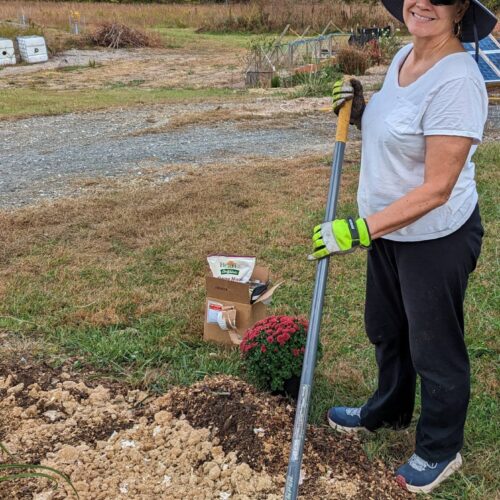
Multiplying plants by division
Dig perennials using a garden fork. Slice the dug plant in half using a sharpened spade. Replant your divisions in a previously prepared bed. The fall is a great time to divide plants with their growing points at the ground level including daylilies, irises, hostas, and perennial sunflowers.
Multiply plants by cuttings
Multiply chrysanthemums by taking cuttings. Make cuttings using stout (pencil-thick) stems, 6 inches long. Strip the foliage leaving a whorl or two at the apex of the cutting. Stick the cutting into a mix of compost and perlite. Use a terracotta pot (which is breathable) and stick cuttings evenly spaced along the pots edge. Water in and bag the cuttings using clear plastic.
Preparing and planting chrysanthemums
Planting for fall display: what to plant
- Balloon flower (Platycodon grandiflorus)
- Bearded Iris (Iris germanica)
- Beebalm (Monarda didyma)
- Beardtongue (Penstemon )
- Blanket flower (Gaillardia )
- Bleeding Heart (Lamprocapnos )
- Chrysanthemums (Chrysanthemum )
- Columbine (Aquilegia )
- Daylilies (Hemerocallis )
- Dianthus (Dianthus )
- Elephants Ear (Bergenia)
- Hosta (Hosta )
- Monkshood (Aconitum )
- Oriental poppies (Papaver orientalis)
- Pansy (Viola tricolor hortensis)
- Peony (Paeonia )
- Perennial sunflower (Helianthus )
- Salvia (Salvia )
- Sea Holly (Eryngium )
- Stonecrop (Sedum)
Lay out the plants in the prepared bed. First, put in the larger plants, in our case, chrysanthemums, then fill in with smaller plants, such as, pansies.

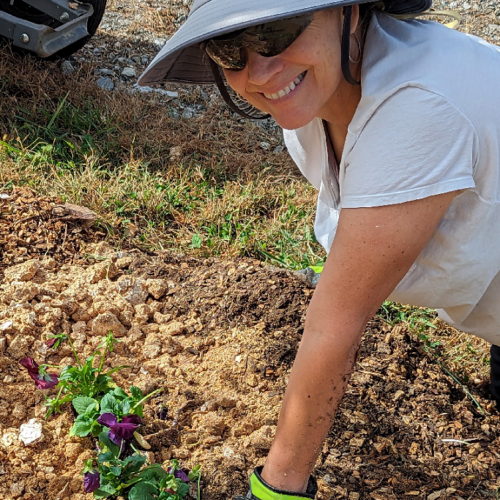
Complete the planting by replacing or adding fresh mulch, then water the new planting thoroughly.
Bulbs to plant in the landscape
- Spring bulbs
- Tulips
- Daffodils
- Alliums
- Leucojum aestivum (Snowflake)
- Galanthus (Snowdrops)
- Mediterranean Bells (Nectaroscordum siculum)
Plant bulbs in the soil to a depth 2 to 3 times their diameter, root plate side down, and pointed tip up. Amend the soil with good compost and bone meal. Bulbs are best planted in small and large clusters for a naturalistic feel.
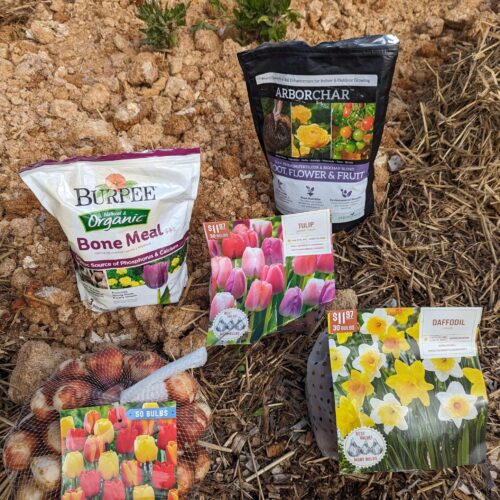
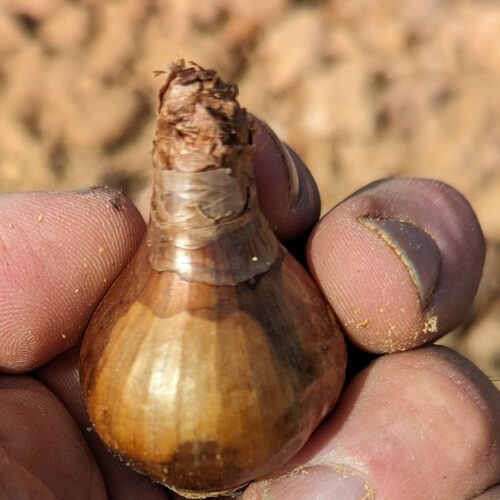
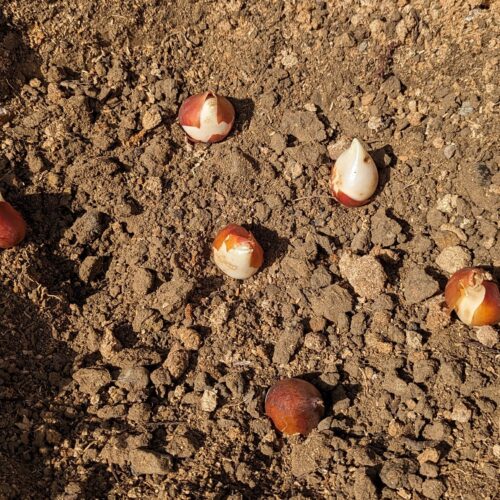
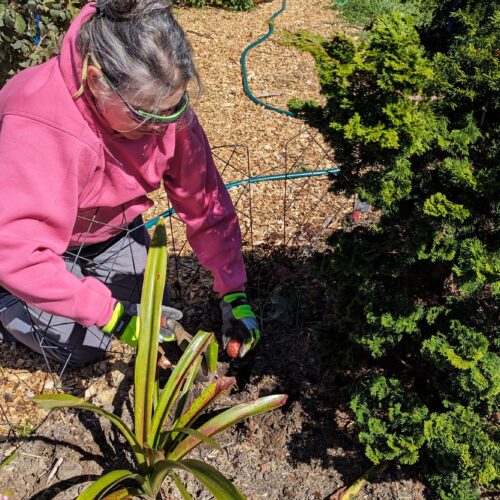
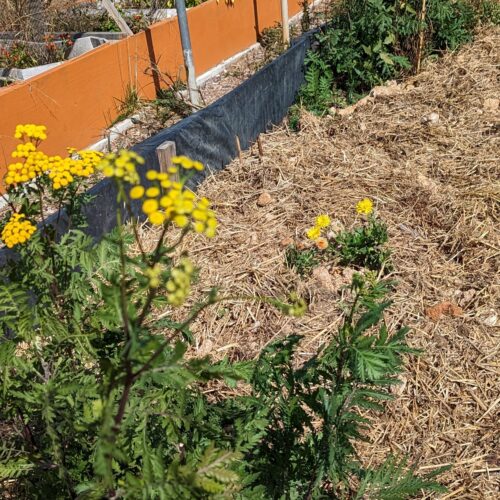
Join us next week when we discuss fall tree and shrub transplanting.
~ Signing off for now, Joe




